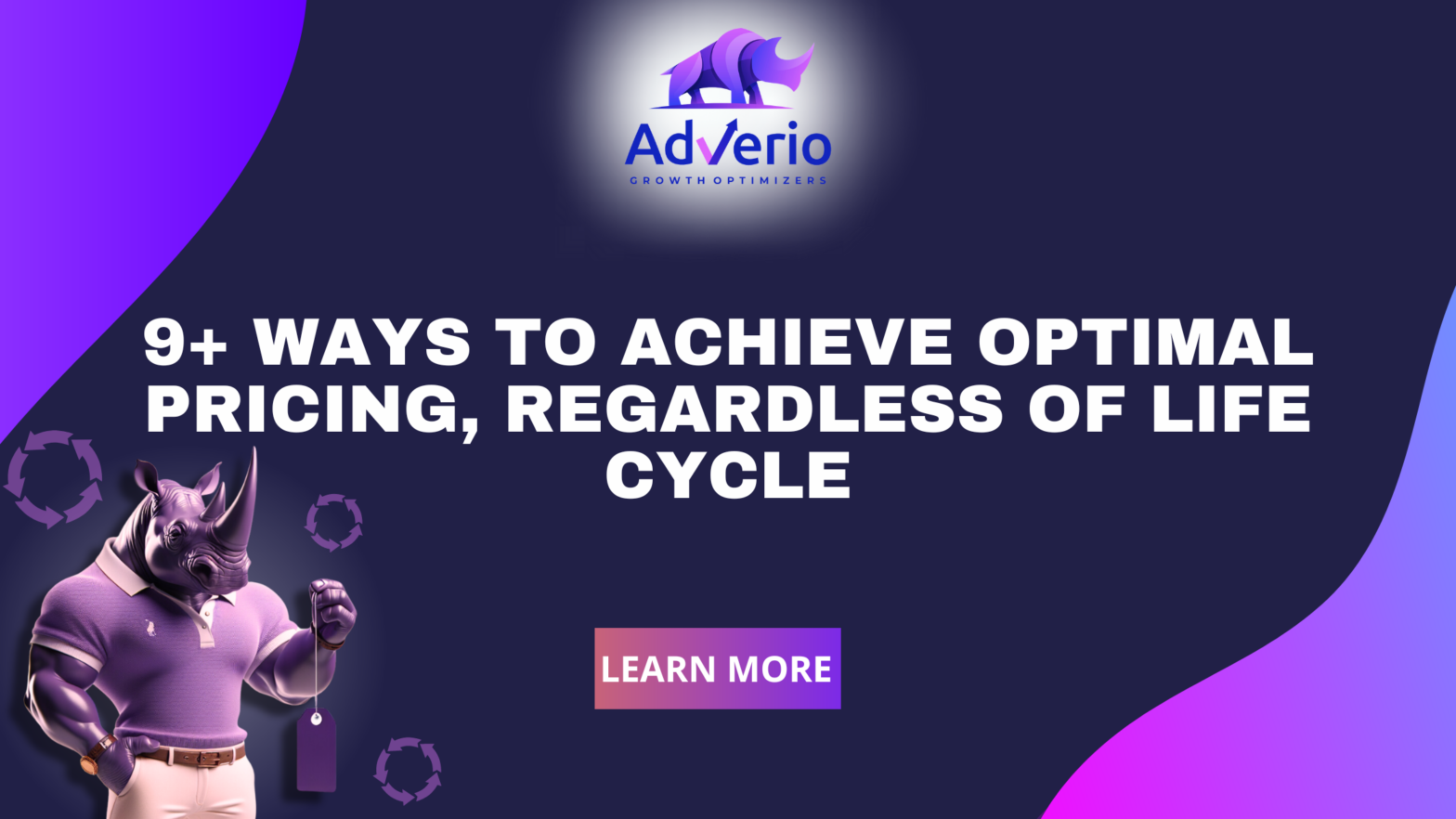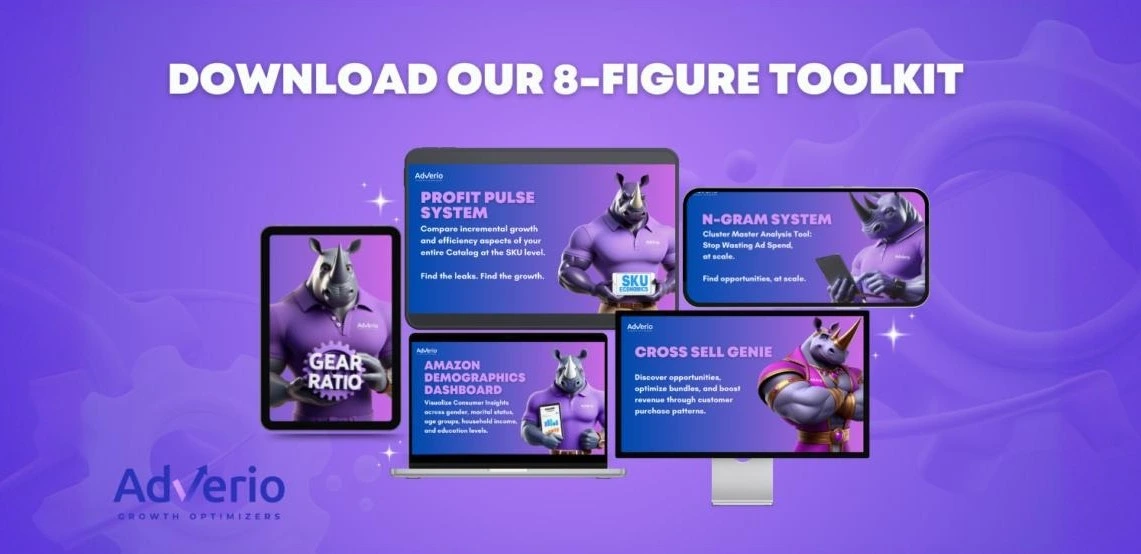Table of Contents
Anti-Set-it-and-Forget-It: In-sync and Seasonal Pricing On Amazon
Audience-Specific Offers: Leverage Your Market Segments
Effective segmentation and targeted marketing are pivotal for enhancing product appeal and optimizing pricing strategies on Amazon. By recognizing the diversity of your potential customer base, you can fine-tune your offers to meet specific needs and preferences, leading to higher conversion rates and customer satisfaction.
Understanding Your Audience
Before implementing audience-specific strategies, it’s crucial to thoroughly understand the different segments you intend to target. This involves analyzing demographic, psychographic, and behavioral data to create a detailed profile of each segment.
Strategic Implementation
Once you’ve identified your key market segments, you can tailor your marketing and pricing strategies to suit their unique characteristics and needs.
Product Customization – Modification for Relevance: Slight adjustments to your product can significantly increase its relevance to a particular segment. For example, offering a water-resistant version of an electronic product for outdoor enthusiasts.
Targeted Marketing
Lifestyle-Driven Imagery: Use images and messaging that resonate with the lifestyle of each segment. For example, using imagery of people in office environments for products aimed at professionals, or rugged outdoor scenes for products intended for adventure seekers.
Personalized Ad Campaigns: Tailored advertisements can speak directly to the desires of each segment, making the marketing more effective. Segment-specific campaigns can highlight the particular benefits that each audience values most.
Diverse Pricing Strategies
– Premium Pricing: For segments with a higher disposable income or professional needs, a premium pricing strategy might be appropriate, reflecting the higher perceived value or specialized functionality of the product.
– Value-Based Pricing: Conversely, if targeting more price-sensitive segments, consider a value-based pricing approach where the price is set based on the perceived value to the customer rather than solely on cost.
Enhanced User Experience
– Segment-Specific Instructions: Provide custom instructions or usage tips that cater to the unique ways different segments might use the product.
– Support and Service: Tailor your customer service to address the specific concerns and preferences of each segment, enhancing the overall customer experience and satisfaction.
Benefits of Audience-Specific Offers
– Increased Conversion Rates: Tailoring products and marketing to specific segments can dramatically increase the relevance and appeal of your offerings, leading to higher conversion rates.
– Enhanced Customer Loyalty: Customers feel valued when products and marketing messages resonate with their specific needs and lifestyles, which can foster greater loyalty and repeat business.
– Optimal Pricing Efficiency: Understand and address the price sensitivity and perceived value of different segments, so you can set prices that maximize both sales volume and profitability.
By leveraging detailed insights into different market segments and adjusting your product offers and pricing accordingly, you can more effectively meet the diverse needs of your customer base, enhancing both competitive advantage and market success on platforms like Amazon.
Vine Review Generator: Hack The Most Compliant Review Opportunity on Amazon
The Anchor: A Psychological Tactic
Anchoring is a potent psychological pricing strategy used to shape customers’ perception of product value. It works on the principle of cognitive bias where the first piece of information offered (in this case, price) serves as the reference point for all subsequent judgments and decisions.
Understanding Anchoring in Pricing
Anchoring effect in pricing involves setting a comparatively high price for a variant of the main product. This high price is the “anchor”, which sets the stage for the pricing of the actual product you want to sell. By introducing this anchor price, all other prices are judged in its shadow.
Implementation of Anchoring Strategy
1. Creating Product Variants
– Develop variants of your primary product, which could differ slightly in terms of features, color, size, or accessories included. The product should be similar enough to be comparable but distinct enough to justify a different pricing structure.
2. Setting the Anchor Price
– Determine the anchor price by setting a price point that’s intentionally higher than the primary product’s intended market price. This anchor should not be exorbitantly high but should be perceptibly more expensive to make the primary product appear more reasonably priced.
3. Marketing and Display
– Place the anchor product prominently alongside the main product. This could be through side-by-side comparisons on the product page, in advertising materials, or during promotional campaigns. Highlight the differences to justify the anchor’s higher price.
4. Strategic Discounting
– Occasionally offer discounts on the anchor product to give an impression of a value deal which still retains the higher perceived value of the product. The discounted price of the anchor can still be higher than the price of the main product.
Psychological Impact on Buyers
When confronted with the anchor price, potential buyers adjust their expectations and perception of value. This high initial price sets a psychological standard in the minds of consumers:
– Price Perception: The main product’s lower price appears more attractive in contrast to the anchor, making it seem like a bargain.
– Value Emphasis: By focusing on what makes the anchor price higher, consumers can appreciate the value of the more affordable option more clearly.
– Quality Assumption: Higher priced variants can lead to an association with higher quality, and when the main product shares similarities, that perception of quality transfers at a perceived lower cost.
Advantages of Utilizing the Anchoring Tactic
– Enhanced Perceived Value: Customers tend to perceive the main product as offering greater value for its price, improving their overall satisfaction and likelihood of purchase.
– Flexibility in Pricing: The anchor provides room to maneuver in terms of pricing strategies for the main product, including occasional price increases that will still feel reasonable to customers.
– Competitive Edge: In competitive markets, having an anchored pricing strategy can distinguish your products from others by highlighting value differences effectively.
Considerations
– Consumer Awareness: Modern consumers are often aware of marketing tactics and may recognize an anchoring strategy, which could affect its effectiveness.
– Brand Positioning: Ensure this strategy aligns with your brand’s overall positioning and reputation. Misalignment can lead to potential trust issues with your brand.
In summary, the anchoring pricing tactic leverages the initial high price set on a product variant to enhance the perceived value and affordability of the main product. Carefully implemented, it can lead to increased sales, customer satisfaction, and competitive advantage.
[Re]Penetration Pricing: A Long-Term Strategy
Slow Mover Converted to Loss-Leader
Transforming slow-moving inventory into loss-leaders is a strategic approach that can revitalize stagnant stock, attract price-sensitive consumers, and enhance the overall visibility and sales velocity of your Amazon listings.
By converting a product variant or exploiting a product accruing Long-Term Storage Fees (LTSF), you lower its price to attract price-sensitive customers. This strategy can also serve as an avenue for garnering reviews, especially if you already have a high review-to-order ratio.
Concept of a Loss-Leader Strategy
A loss-leader strategy involves selling a product at a low price or even a loss to draw customers into your store or listing. While this might seem counterintuitive, the key lies in the potential benefits of increased traffic, improved sales of other items, and enhanced brand visibility.
Steps to Convert Slow Movers into Loss-Leaders
1. Identify Underperforming Stock
– Review your inventory to identify products that are moving slowly and accruing storage fees or at risk of becoming obsolete. These products are ideal candidates for conversion into loss-leaders.
2. Pricing Adjustment
– Set Aggressive Prices: Determine a price point that is attractive enough to draw attention and stimulate impulse purchases. The goal is to make these items appealing compared to competitors or even other products in your catalog.
3. Marketing the Loss-Leader
– Feature Prominently: Use Amazon’s advertising tools to feature these loss-leaders prominently in search results and category listings.
– Bundle Offers: Consider bundling the loss-leader with more profitable items to increase the overall order value. This helps recoup some of the losses incurred on the loss-leader and moves additional inventory.
4. Monitoring and Analysis
– Track Sales Impact: Closely monitor the sales frequency and volume post-implementation to gauge the effectiveness of the loss-leader strategy.
– Review Financials: Ensure that the increased sales of other products or the overall increase in customer traffic compensates for the reduced profit margins on the loss-leader.
Benefits of Using Loss-Leaders
1. Clear Old Inventory
– This strategy helps clear out old or excessive stock that is expensive to store, thereby reducing inventory holding costs and optimizing warehouse space.
2. Attract Price-Sensitive Customers
– By attracting customers with low prices, you increase the likelihood they will explore and purchase other products with higher profit margins.
3. Boost Overall Sales Velocity
– Enhanced traffic to your listings can lead to better rankings on Amazon, increasing visibility across your entire product line.
4. Garner Reviews
– Selling higher volumes of the loss-leader can lead to more reviews, which is especially beneficial if the product performs well in terms of customer satisfaction but was previously overlooked by shoppers.
5. Test Market Reactions
– This approach can also serve as a market test to assess the demand at lower price points, providing valuable insights for future pricing and product development strategies.
Cautionary Notes
– Margin Consideration: Ensure that the overall financial impact is positive, accounting for any potential losses on individual items.
– Brand Perception: Be careful that the low pricing does not negatively affect the perceived value of your brand or other products.
By carefully selecting and strategically pricing slow-moving products, sellers can effectively use a loss-leader strategy to drive traffic, boost sales, and optimize their inventory on Amazon. This approach not only helps in managing stock efficiently but also in attracting a broader customer base and improving the performance metrics crucial for success on the platform.
The Launch Staircase – Building Initial Momentum
The Standbys: 3 Reliable classics.
- Strikethrough Pricing: Emphasize the discount by showing the “old” price struck through next to your now lower, discounted price.
- Coupons: Coupons can drive sales while leaving the product’s list price intact.
- Promotional rates: Timely offers can help move products without permanently lowering the price.





























